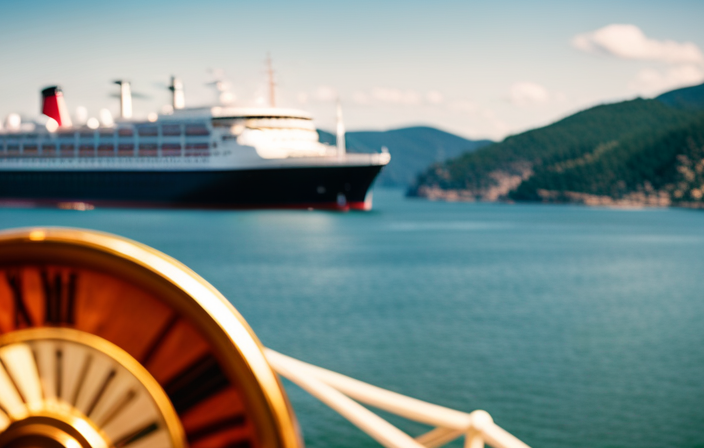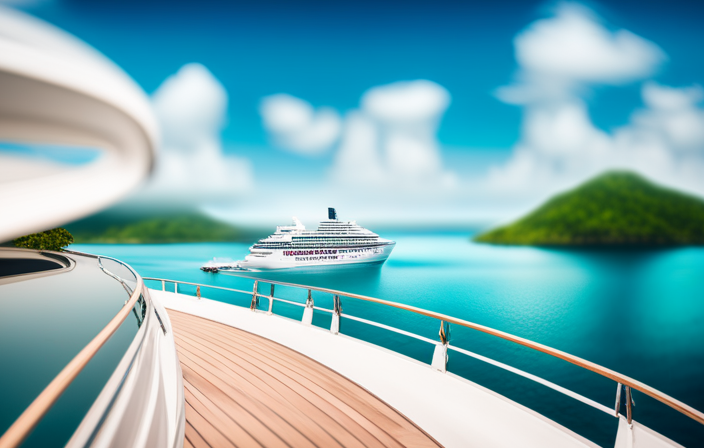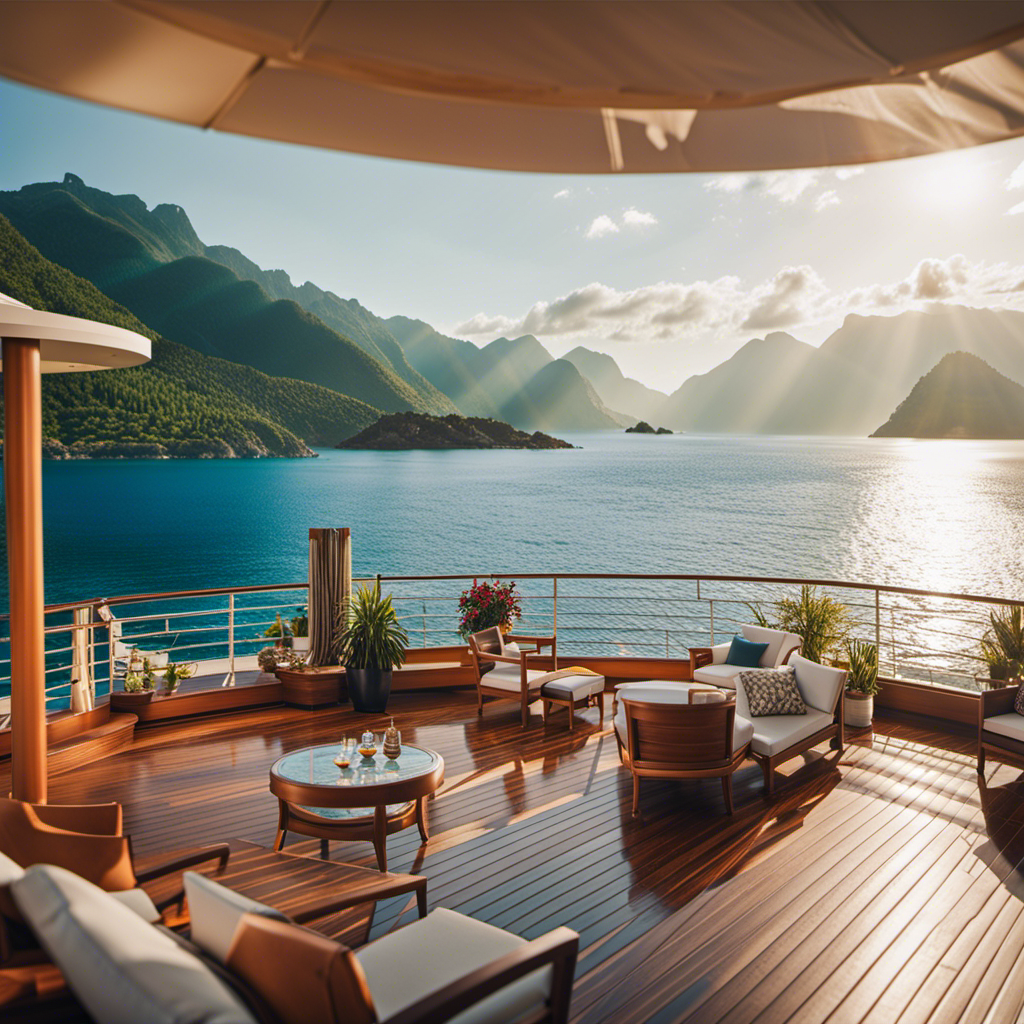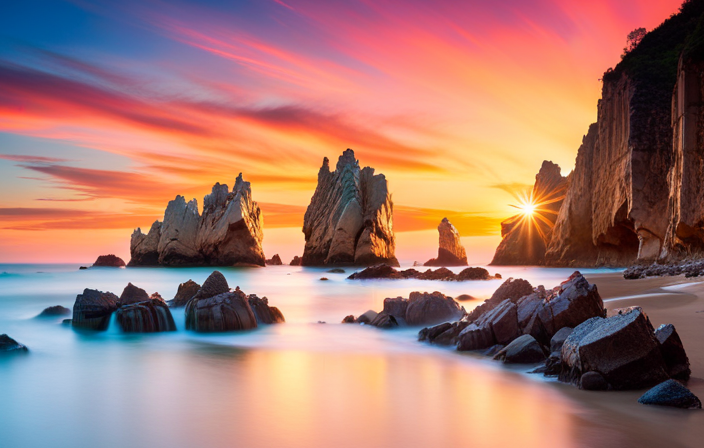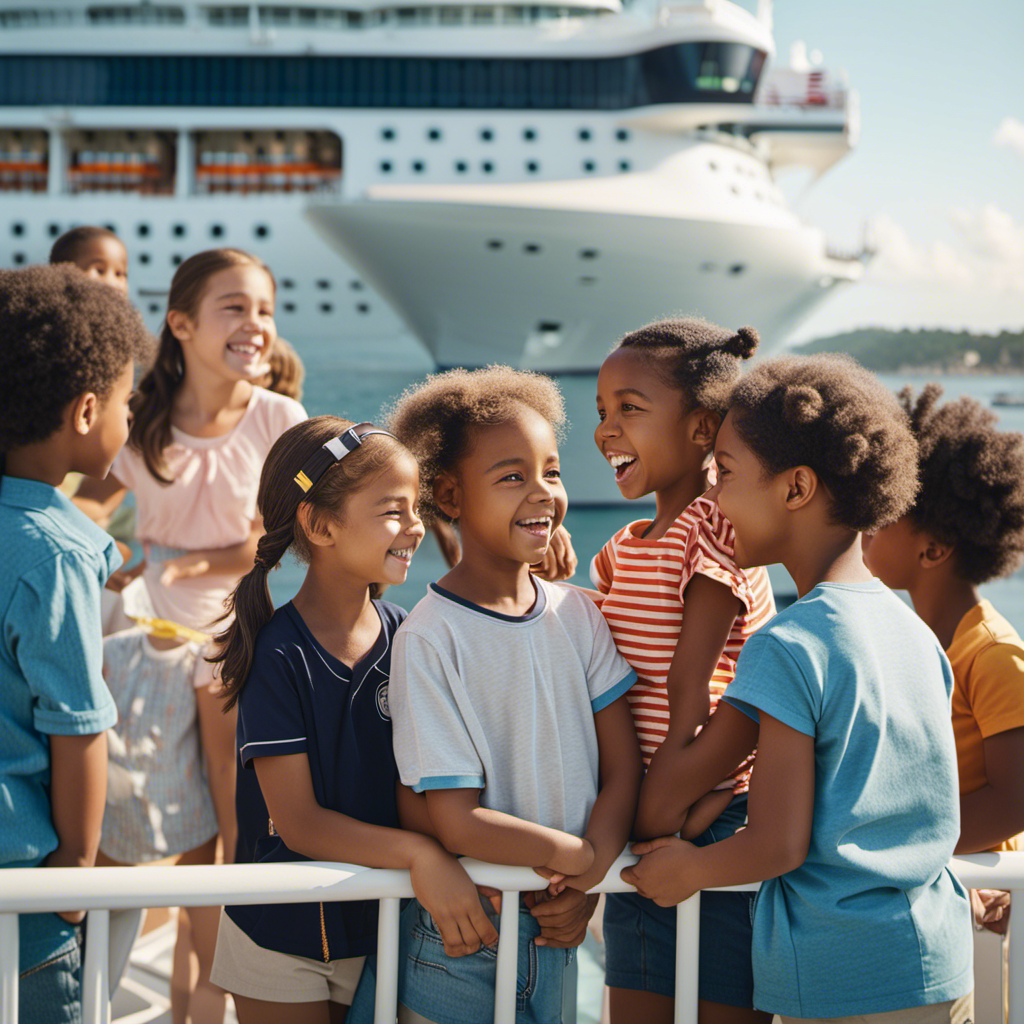Ah, the magic of the boundless sea! Join us as we embark on an intriguing journey through the development of cruising.
From its humble beginnings over a century ago with the Prinzessin Victoria Luise, to the post-war boom that propelled the industry forward, and the exploration of new horizons in the Caribbean, cruising has undergone remarkable transformations.
We’ll delve into the expansion of cruise ship sizes, the inclusion of diverse destinations, the impact of technology, the changing demographics of passengers, and the industry’s commitment to sustainability.
Get ready for a thrilling voyage into the past, present, and future of cruising.
Key Takeaways
- Cruising has a long history, dating back over 100 years, with the first commercial cruise ship being the Prinzessin Victoria Luise.
- The popularity of cruising grew after World War II, and the industry has seen significant growth in recent decades, with larger ships and expanded itineraries.
- Technology has had a significant impact on the cruising industry, improving safety measures, introducing online booking and high-speed internet access, and offering virtual reality experiences.
- The demographics of cruise passengers have changed, with a decrease in the average age, an increase in families and solo travelers, and cruise lines catering to different cultural preferences.
The Early Days of Cruising
When I think about the early days of cruising, I am amazed by how much the industry has grown and evolved over the past century. In the early days, cruising was a symbol of luxury and leisure, offering a unique experience for those seeking exploration and adventure.
Passengers would embark on grand ocean liners, indulging in opulent amenities and taking part in exciting shore excursions. These early cruises were a way for wealthy individuals to escape the pressures of everyday life and experience the thrill of discovering new lands.
From the majestic steamships of the 19th century to the modern mega-ships of today, the industry has come a long way. However, the allure of luxury and the spirit of adventure are still at the heart of cruising, making it a timeless form of travel.
Post-War Boom: The Rise of Cruise Travel
After World War II, the popularity of cruising grew significantly. The post-war economic impact and cultural influences played a major role in this boom.
As economies began to recover from the devastation of the war, people had more disposable income and were eager to explore the world. Cruising offered a luxurious and glamorous escape, attracting a wide range of travelers.
The cultural influences of the time also played a part in the rise of cruise travel. The 1950s and 1960s were a time of great social change and increased leisure time. The allure of exotic destinations and the chance to experience different cultures appealed to many. Cruise lines capitalized on this desire for adventure and offered unique itineraries that catered to these cultural interests.
The post-war period marked a turning point in the history of cruising, setting the stage for its continued growth and evolution.
Exploring the Caribbean: A New Frontier for Cruising
I’ve always been fascinated by the exploration of the Caribbean, which has opened up new opportunities for cruising.
The Caribbean offers a unique and diverse array of remote islands to explore, each with its own rich history and vibrant culture. When cruising through the Caribbean, you have the chance to immerse yourself in the local traditions and customs, from tasting authentic cuisine to participating in traditional dances and music.
The Caribbean is also home to stunning natural beauty, with crystal-clear turquoise waters, white sandy beaches, and lush tropical landscapes. Whether you’re snorkeling in the vibrant coral reefs, hiking through the rainforests, or simply relaxing on the beach, the Caribbean provides endless opportunities for cultural immersion experiences.
It truly is a paradise waiting to be discovered.
From Small to Mega: The Growth of Cruise Ship Sizes
Cruise ship sizes have significantly increased over the years, offering passengers more space and a wider range of amenities. The growth in cruise ship sizes can be attributed to advancements in cruise ship design, allowing for larger and more efficient vessels.
These mega ships have the capacity to accommodate thousands of passengers and offer a multitude of onboard activities, from luxurious spas to multiple restaurants and entertainment venues. This expansion in size has had a significant economic impact, as it has created jobs in shipbuilding and manufacturing industries.
Additionally, the larger ships attract more tourists to the destinations they visit, boosting local economies through increased spending on excursions, shopping, and dining. The growth of cruise ship sizes has undoubtedly transformed the industry, providing passengers with more options and experiences while contributing to the economic growth of destinations worldwide.
Expanding Horizons: New Destinations in Cruise Itineraries
As a cruise passenger, I’m excited about the expanding horizons of new destinations in cruise itineraries. The cruise industry is constantly seeking out new frontiers and emerging markets, offering passengers unique and adventurous experiences. Here are four reasons why the inclusion of new destinations is a game-changer for cruise passengers:
-
Diversity of Experiences: With new destinations being added to cruise itineraries, passengers have the opportunity to explore a wider range of cultures, landscapes, and attractions. From remote islands to bustling cities, there is something for everyone.
-
Off-the-Beaten-Path Adventures: These new destinations often take passengers off the beaten path, allowing them to discover hidden gems and experience authentic local culture. It’s a chance to escape the crowds and have a truly immersive experience.
-
Unique Itineraries: Cruise lines are constantly creating unique itineraries that combine popular ports of call with lesser-known destinations. This allows passengers to enjoy a mix of iconic landmarks and off-the-grid experiences in one trip.
-
Economic Growth: The expansion of cruise itineraries to new destinations brings economic growth to these emerging markets. It creates opportunities for local businesses, boosts tourism, and helps to develop infrastructure.
With new frontiers and emerging markets being explored, the future of cruise itineraries promises exciting and enriching experiences for passengers like me.
Embracing Technology: Innovations in the Cruise Industry
One of the most exciting aspects of the cruise industry is how technology has revolutionized the onboard experience. With the digital transformation taking place, cruise ships now offer a wide range of innovative amenities and activities. One of the most notable advancements is the integration of virtual reality experiences. This technology allows passengers to immerse themselves in virtual worlds and enhance their cruise experience. Whether it’s exploring ancient ruins or swimming with dolphins, virtual reality brings a new level of excitement and adventure to cruising. In addition to virtual reality, cruise lines have also embraced other technological innovations such as high-speed internet access and digital key cards. These advancements have made it easier for passengers to stay connected and access their cabins. The cruise industry continues to evolve and embrace technology, ensuring that passengers have an unforgettable and technologically advanced experience on board.
| Digital Transformation | Virtual Reality Experiences |
|---|---|
| High-speed internet access | Immersive virtual worlds |
| Digital key cards | Adventure and exploration |
| Enhanced connectivity | Unforgettable experiences |
Changing Face of Cruise Passengers: Demographic Shifts
I’ve noticed a significant shift in the demographic of cruise passengers in recent years. The cruise market segmentation has become more diverse, reflecting the changing preferences and interests of travelers.
Here are three key aspects of this cultural diversity on cruise ships:
-
Multi-generational travel: Families are now a major demographic in the cruise industry. With the availability of a wide range of activities and amenities suitable for all age groups, cruise lines have successfully attracted families looking for a convenient and enjoyable vacation option.
-
Solo travelers: More and more people are choosing to embark on solo adventures, and the cruise industry has recognized this growing trend. Cruise lines now offer special packages and activities catering to solo travelers, making it easier for them to socialize and connect with like-minded individuals.
-
International appeal: Cruise ships have become floating melting pots, attracting travelers from all around the world. With different cultural preferences and backgrounds, these passengers bring a unique vibrancy and diversity to the onboard experience. Cruise lines have responded by offering a variety of international cuisines, cultural performances, and language-specific activities to cater to this global audience.
With the changing face of cruise passengers, the industry continues to evolve to meet the needs and desires of a diverse range of travelers.
Sustainable Cruising: A Commitment to the Environment
As we continue our journey through the evolution of cruising, it is important to highlight the industry’s commitment to the environment. Sustainable practices and eco-friendly initiatives have become a top priority for cruise lines in recent years.
Cruise companies are implementing a range of measures to minimize their environmental impact. They are investing in advanced waste management systems to ensure proper disposal and recycling of materials. Additionally, many cruise ships are now equipped with advanced water treatment systems to prevent pollution in the ocean.
To reduce their carbon footprint, cruise lines are increasingly using alternative fuel sources such as liquefied natural gas (LNG) and exploring the use of renewable energy technologies like solar panels. They are also implementing energy-efficient measures throughout the ship, including LED lighting and smart HVAC systems.
Moreover, cruise lines are collaborating with local communities and organizations to support conservation efforts in the destinations they visit. They are promoting responsible tourism practices and working towards the preservation of marine life and ecosystems.
Looking Ahead: Future Trends in the Cruise Industry
Looking ahead, I can’t wait to see how the cruise industry embraces sustainable technology and offers more immersive and experiential itineraries. The future of cruising is promising, with several exciting trends on the horizon:
-
Artificial intelligence integration: Cruise lines are increasingly incorporating AI technology to enhance guest experiences. From personalized recommendations to virtual concierge services, AI is revolutionizing the way we cruise.
-
Immersive entertainment experiences: Cruise ships are taking entertainment to the next level with immersive experiences. From interactive shows and themed events to virtual reality gaming, passengers can expect unforgettable entertainment options.
-
Environmental sustainability: The industry is investing in sustainable technology, such as alternative fuel sources and waste management systems. Cruise lines are committed to reducing their environmental impact and preserving the destinations they visit.
-
Enhanced guest experiences: Cruise lines are continuously striving to enhance the overall guest experience. From upgraded accommodations and onboard amenities to innovative dining options and personalized services, passengers can expect a truly exceptional journey.
-
Expansion of itineraries: The cruise industry is expanding its itineraries to include more diverse and unique destinations. From remote islands to cultural hotspots, travelers can explore a wider range of destinations and experience different cultures.
With these exciting developments on the horizon, the future of cruising looks brighter than ever.
Frequently Asked Questions
How Has the COVID-19 Pandemic Affected the Cruise Industry?
The COVID-19 pandemic has had a devastating impact on the cruise industry. Cruise lines have suspended operations, leading to a significant loss of revenue and jobs. Local economies that rely on tourism have been severely affected.
What Are Some of the Challenges Cruise Lines Face in Terms of Environmental Sustainability?
Cruise lines face challenges in terms of environmental sustainability. Their efforts to become more sustainable include reducing waste and emissions, implementing recycling programs, and using alternative fuels. Cruise ship waste can have a negative impact on marine ecosystems.
How Do Cruise Lines Ensure the Safety and Security of Passengers on Board?
Cruise lines ensure passenger well-being and emergency preparedness through rigorous safety protocols, including regular drills and inspections, trained staff, advanced technology for monitoring and communication, and collaboration with authorities.
What Are Some Popular Activities or Amenities Offered on Modern Cruise Ships?
On modern cruise ships, there’s a world of luxury offerings and innovative technology. From relaxing in luxurious spas to enjoying thrilling water slides, there’s something for everyone. It’s a voyage of endless possibilities.
How Do Cruise Lines Cater to the Diverse Cultural Preferences of Their Passengers?
Cruise lines cater to diverse cultural preferences by offering a variety of dining options that include international cuisines. They also provide cultural entertainment onboard, such as live music, dance performances, and themed events, to immerse passengers in different cultures.
Conclusion
Well, it seems like cruising has come a long way over the years. From its humble beginnings to the massive ships we see today, the industry has certainly evolved.
And with the advancements in technology, the guest experience has improved as well. It’s interesting to see how the demographics of cruise passengers have changed, with more families and solo travelers choosing to set sail.
But amidst all the progress, it’s important to remember the impact on the environment. As we look to the future, let’s hope that the industry continues to prioritize sustainability and find ways to minimize its carbon footprint.

